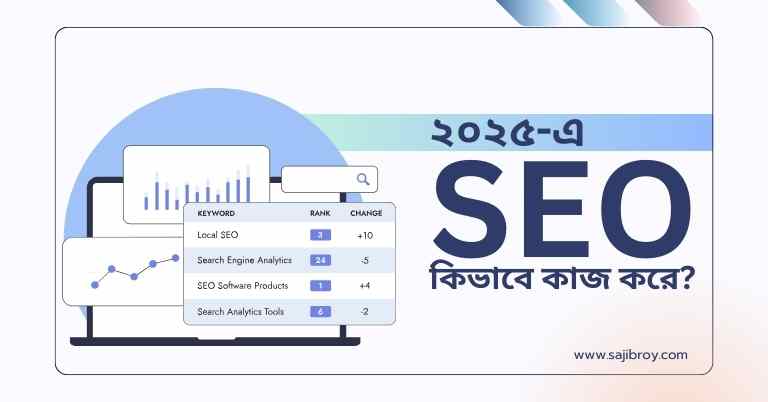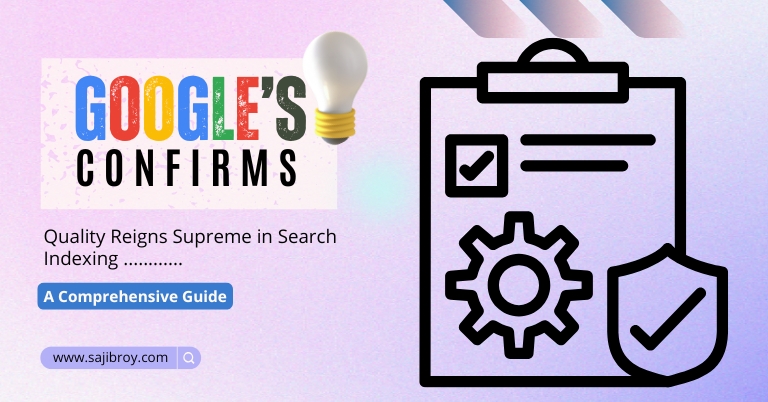Google’s search engine is a complex system. It uses numerous factors to rank web pages.
Understanding these factors is crucial. It can help you optimize your website for better visibility.
This guide will delve into Google’s page ranking factors. We’ll explore the most important ones and how they influence SEO.
Google’s ranking algorithm is constantly evolving. It’s influenced by:
- Technological advancements
- User behavior changes
Staying updated with these changes is key. It can help you adapt your SEO strategy effectively.
We’ll also look at the future of Google’s ranking factors. We’ll discuss what to expect in 2025 and beyond.
This guide is comprehensive. It’s designed to provide a detailed understanding of Google’s ranking system.
Whether you’re an SEO professional, website owner, digital marketer, or content creator, this guide is for you.
We know over 200 ranking factors, including:
- Content quality
- Backlinks
- User experience
- And more
We’ll also explore:
- The role of artificial intelligence in Google’s algorithm
- The importance of structured data and schema markup
- The impact of user behavior signals
- The importance of optimizing for Google’s E-A-T principles
- The role of local SEO
- The significance of Google My Business for local rankings
- The influence of voice search optimization
- The significance of video content on search rankings
- The importance of image optimization for SEO
- The role of content freshness and the need for regular updates
By the end of this guide, you’ll have a clear understanding of Google’s page ranking factors. You’ll be equipped with the knowledge to optimize your website effectively.
Let’s dive in and start exploring the essential factors influencing Google’s page ranking.
| Key Takeaways |
|---|
| SEO strategies should be flexible and data-driven. Understanding user intent and delivering value enhances engagement. High-quality content serves as the core foundation for ranking success. Consistent monitoring and adapting are crucial in maintaining relevance. As Google updates its algorithms, staying informed is imperative. Embracing technological advances like AI can give your strategy an edge. Search rankings will continue to prioritize user experience. Ensuring sites are mobile-friendly and fast is non-negotiable. Consistent optimization in these areas supports ongoing visibility. Building a holistic SEO plan that integrates brand signals, technical SEO, and quality content is key. Staying proactive in this dynamic field ensures that you remain competitive and successful. Google Ranking Factors SEO Checklist To ensure your SEO strategy is comprehensive and effective, consider the following checklist to optimize your site for top results: 1. Content Quality and Relevance: Produce engaging, authoritative, and user-focused content. Align with current trends and updates. 2. Keyword Research and Optimization: Implement a robust keyword strategy that mirrors search intent. Use relevant keywords naturally in content and meta tags. 3. Backlink Profile: Build a diverse and high-quality link profile. Engage in ethical link-building practices. 4. User Experience and Core Web Vitals: Ensure fast-loading pages and mobile-friendly design. Optimize for a seamless user experience. 5. Technical SEO and Site Architecture: Maintain crawlability and indexability through clean site structure and up-to-date schema markup. 6. On-Page Elements: Optimize title tags, headings, and meta descriptions. Use internal linking for improved navigation and relevance. 7. Security Measures (HTTPS): Keep your site secure by utilizing HTTPS protocols. Build trust with users through secure transactions. 8. Local SEO: Use Google My Business and ensure NAP consistency for local search improvements. Respond to customer reviews and queries. 9. Brand Signals: Encourage social media interaction to strengthen your brand’s presence. Monitor brand mentions for effective reputation management. 10. Regular Monitoring and Updates: Use tools like Google Analytics and Search Console for regular performance checks. Adapt strategies based on insights. By incorporating this checklist into your regular SEO routine, you can better align with Google’s evolving expectations and maintain robust search engine performance. |

Let's See the Topic Overview
Understanding Google Page Ranking Factors
Google’s ranking system is intricate. It involves various factors influencing where pages appear in search results. Understanding these is crucial for SEO success.
At its core, Google’s aim is simple. It wants to deliver the most relevant results to users swiftly.
To achieve this, it uses numerous factors. Some are well-known, while others are more obscure.
A few pivotal components shape search rankings. These include content quality, user experience, backlinks, and site security.
Here’s a simplified list of some vital ranking factors:
- Content quality and relevance
- Mobile-first optimization
- Page speed and user experience
- Site security (HTTPS)
- Quality of backlinks
Content remains king, but the context matters too. Google’s algorithm evaluates how closely your content aligns with user intent.
Moreover, page load speed is increasingly significant. A fast site improves user satisfaction and lowers bounce rates.
Mobile-friendliness cannot be overlooked. Google prioritizes sites optimized for mobile devices, reflecting current user habits.
Site security through HTTPS is another factor. It not only ensures data safety but also boosts trust.
Backlinks have always been key. They signal credibility and authority if they come from reputable sources.
By understanding these factors, you can tailor your SEO strategy accordingly. This approach helps increase your site’s visibility and performance in Google search.
The Evolution of Google’s Ranking Algorithm
Google’s algorithm has changed dramatically since its inception. It initially focused on basic metrics like keyword density. However, in recent years, it has become far more sophisticated.
Over time, algorithms such as Panda and Penguin have transformed SEO. Panda prioritizes high-quality content, while Penguin deals with link quality. These updates keep the web free of spam and low-quality content.
One major algorithm that changed search is the Hummingbird update. Introduced in 2013, Hummingbird enhanced semantic search. It allowed Google to understand intent behind the search terms better.
In 2015, Google launched the RankBrain update. This introduced machine learning and artificial intelligence into search. With RankBrain, Google began to understand complex queries more effectively.
Google’s focus on mobile usability became clear with the Mobilegeddon update. Websites optimized for mobile saw improved rankings. This marked the beginning of a mobile-first indexing strategy.
Machine learning continues to play a significant role. Google’s BERT update in 2019 made big strides in understanding natural language. It further improved how search results matched user intent.
Looking forward, experts anticipate AI will become even more integrated. It’s expected that AI will help Google personalize results based on individual users. The goal is to offer a more tailored search experience.
Here are some notable algorithm updates:
- Panda (2011)
- Penguin (2012)
- Hummingbird (2013)
- Pigeon (2014)
- RankBrain (2015)
- Mobilegeddon (2015)
- BERT (2019)
Each update signifies a step towards user-focused search. The emphasis on quality, relevance, and user intent is more apparent than ever. Google’s evolution aims to deliver the best possible search experience.
SEO strategies must evolve with these changes. Understanding past updates helps predict future trends. Preparing for these updates is key to maintaining search visibility.

Google’s Core Principles: Relevance, Authority, and User Experience
At the heart of Google’s search engine are its core principles. These principles ensure users receive the best possible results. Relevance, authority, and user experience form the foundation of Google’s ranking algorithm.
Relevance is about matching search queries with the right content. Google analyzes keywords and the context in which they appear. This helps determine how well a page answers a user’s query.
Authority signifies the trustworthiness and credibility of a website. Google views sites with strong backlink profiles as more authoritative. The quality and quantity of inbound links matter significantly.
User experience is increasingly important in the ranking process. Factors such as page speed, mobile-friendliness, and site design impact user satisfaction. A positive user experience keeps visitors on the page longer.
Together, these principles guide how Google evaluates websites. A site’s content must be pertinent to search queries to rank well. It must also be trustworthy and provide a seamless user experience.
Understanding these principles can help optimize websites effectively. By aligning content with search intent, websites become more relevant. Building quality backlinks can enhance a site’s authority.
A focus on user experience also helps address technical SEO issues. Improving load times and mobile usability can lead to better engagement metrics. This, in turn, can result in higher rankings.
These principles are not static. They evolve as user expectations and technology change. Staying attuned to these shifts can keep your SEO strategies successful.
In the end, focusing on relevance, authority, and user experience leads to a sustainable SEO strategy. It ensures that your website remains competitive in the ever-changing search landscape.
Top Most Important Google Ranking Factors in 2025
As Google continues to evolve, so do its ranking factors. In 2025, these factors will be more refined and intricate than ever. Understanding these can help maintain or improve your site’s visibility.
Content quality and relevance will remain at the forefront. Google’s focus on providing users with the best answers drives this priority. Well-crafted content that meets user needs will always rank better.
Backlinks will continue to play a crucial role. Their importance in establishing authority and trust shows no signs of diminishing. Quality, not quantity, will be the key in link profiles.
User experience has become a defining factor in rankings. Google’s emphasis on sites that load quickly and offer seamless navigation will increase. Metrics from Core Web Vitals will be vital in assessing these elements.
Technical SEO will ensure a website’s infrastructure can support SEO efforts. Factors such as crawlability, site architecture, and structured data will gain emphasis. These elements ensure that content can be accessed and understood by search engines.
Finally, the influence of brand signals will grow. A strong brand presence will correlate with higher rankings. The connection between positive user perceptions and search visibility will become clearer.
1. Content Quality and Relevance
In the SEO landscape, quality content is king. Google prioritizes content that meets users’ search intent. Therefore, producing high-quality, engaging content will be essential in 2025.
Crafting content that resonates with users involves understanding their needs. It’s about creating information that answers their queries comprehensively. Ensuring content relevance is a constant priority.
The importance of matching content with user intent cannot be overstressed. Effective keyword research helps align content with user expectations. Moreover, identifying long-tail keywords gives more specificity to content offerings.
Here are key aspects of quality content:
- Relevance to user queries
- Depth and comprehensiveness
- Engagement and readability
Content freshness will also significantly impact rankings. Regular updates signal that your site is active and relevant. Incorporating new insights or developments keeps content timely.
Understanding your audience allows you to tailor content more effectively. Personalization and alignment with user interests lead to better user satisfaction. This strategy reduces bounce rate and increases dwell time, both of which influence rankings.
As 2025 approaches, focusing on a user-first approach will be paramount. It ensures content not only ranks well but also builds brand loyalty. SEO strategies must integrate these principles to stay ahead.Crafting High-Quality, Engaging Content
Creating high-quality content involves more than just writing. It’s about understanding the nuances of what makes content engaging. It combines useful information with an appealing presentation.
The process starts with research. Thorough research ensures that all necessary topics are covered. Comprehensive content answers all possible user questions.
Adding unique insights enhances value. Readers appreciate new perspectives or data they haven’t encountered. This can differentiate your content from competitors’.
Engaging content also uses varied formats. Including images, videos, and infographics can make information more digestible. Diverse media keep readers interested and reduce bounce rates.
Storytelling elements can be powerful in content. Narratives engage readers on an emotional level. They help simplify complex information, making it accessible.
The inclusion of clear calls to action is vital. They guide readers on what to do next. An effective CTA enhances engagement and can lead to conversions.
Balancing these elements will be critical in 2025. It creates content that not only ranks well but sustains reader interest. This balance is a cornerstone of a successful content strategy.Understanding and Matching Search Intent
Search intent is the purpose behind a user’s query. Understanding it guides how content should be structured. Aligning content with intent boosts relevance and ranking potential.
There are various types of search intent. Informational intent seeks knowledge or answers. Navigational intent aims to visit a specific site or page. Transactional intent involves a desire to purchase or engage in commerce.
Research tools can help decipher intent behind keywords. Using analytics, SEO professionals can determine what users seek. This leads to more targeted and effective content strategies.
Matching content with intent involves anticipating user needs. For informational queries, comprehensive guides or explainer articles work best. For transactional intents, optimizing product pages can lead to conversions.
Using question-based formats can also address search intent. FAQs or “how-to” guides align well with informational queries. These formats cater directly to common user questions.
Continuous monitoring of how users interact with content is essential. Behavior analysis helps adjust strategies to better meet intent. This adaptability ensures content remains relevant as search trends change.
Effective alignment with search intent leads to more satisfied users. Meeting user needs as closely as possible enhances trust and authority. It positions content favorably within Google’s algorithm.
2. Backlinks: Building a Strong Link Profile
Backlinks are akin to endorsements in the digital world. They signify trust and authority, influencing SEO greatly. In 2025, a robust link profile will be invaluable for rankings.
High-quality backlinks remain pivotal. Links from reputable, authoritative sites carry more weight. They signal to Google that your content is reliable and valuable.
Building a strong link profile is more than acquiring links. It’s about fostering genuine relationships. These relationships can lead to organic link-building opportunities.
Varying the sources of backlinks strengthens your profile. Acquiring links from diverse domains enhances credibility. It shows Google’s algorithm that your reach and influence are extensive.
Avoiding black-hat SEO techniques is crucial. Practices such as link farms or paid links can lead to penalties. Google continues to refine its ability to detect and penalize manipulative tactics.
Here are strategies for building effective backlinks:
- Guest blogging on reputable sites
- Creating shareable and link-worthy content
- Networking with industry influencers
Leveraging these methods promotes a sustainable link-building strategy. It enables the creation of a diverse and authoritative link profile. A strategic approach to link-building aligns with SEO goals for 2025.The Importance of High-Quality Backlinks
High-quality backlinks continue to influence search rankings significantly. These links serve as endorsements from respected sites. They enhance your site’s authority and trustworthiness in Google’s eyes.
The quality of backlinks is more crucial than quantity. A few links from authoritative sites outweigh numerous low-quality ones. Authority sites are usually industry leaders or widely recognized domains.
Relevant backlinks enhance link quality. Links from related industries or niches offer more value. They show Google that your site is contextually relevant.
Consistency in backlink acquisition is also vital. A steady, natural growth of inbound links looks organic. Sudden spikes might trigger algorithmic scrutiny for unnatural patterns.
Anchor text relevance can impact the value of backlinks. Descriptive, keyword-rich anchor texts improve context. However, over-optimization can appear spammy and should be avoided.
In 2025, focusing on quality will remain essential. Building and maintaining connections with high-authority sites is key. This ensures that link profiles contribute positively to rankings.Strategies for Effective Link Building
Successful link-building strategies hinge on fostering authenticity. Links should stem from genuine relationships and quality content. This approach yields long-term benefits for SEO efforts.
Guest blogging remains effective. Collaborating with reputable publications opens avenues for backlinks. It also increases your content’s visibility to broader audiences.
Content marketing plays a crucial role. Creating high-value, shareable content attracts organic backlinks. Resources like whitepapers or infographics gain traction naturally.
Building broken link strategies are also beneficial. Identifying broken links on related sites creates opportunities. Offering replacement content can earn backlinks while helping site owners.
Networking with industry influencers is another potent strategy. Influencers have established authority and reach. Establishing rapport with them can lead to organic mentions and links.
Lastly, regular audits help maintain a healthy link profile. Monitoring backlinks ensures quality remains high. It protects against spammy or irrelevant links that could harm rankings.
These strategies support a proactive link-building approach. By focusing on quality and relevance, they foster sustainable link profiles. They align with the evolving best practices of SEO in 2025.
3. User Experience (UX) and Core Web Vitals
User experience (UX) impacts SEO profoundly. Google prioritizes websites offering superior user experiences. Elements like site speed and mobile usability are becoming more significant.
Core Web Vitals are integral to evaluating UX. These metrics measure loading speed, interactivity, and visual stability. Meeting these standards is essential for ranking success.
Page speed is a critical component. Users prefer sites that load quickly and efficiently. Slow loading can increase bounce rates, negatively affecting rankings.
Responsive design is equally important. With mobile-first indexing, ensuring mobile usability is paramount. Sites must perform well across all device types.
A site’s navigation also impacts user experience. Clear, intuitive navigation retains users. It helps them find information quickly, improving dwell time.
To enhance UX, consider these factors:
- Optimize loading times
- Ensure mobile friendliness
- Simplify navigation structure
These efforts lead to a more satisfying user experience. Google rewards sites with great UX through higher rankings. Prioritizing UX improvements aligns with Google’s vision for search quality.Mobile Usability and Responsive Design
Mobile usability is no longer an option; it’s a necessity. Mobile users form a significant part of web traffic today. Ensuring their experience is seamless affects SEO directly.
Responsive design caters to diverse devices. Websites must adapt to screens of various sizes and resolutions. A flexible design improves accessibility and user satisfaction.
Navigation plays a part in mobile usability. Menus should be easily accessible and simplified for mobile users. Complex navigation leads to frustration and higher bounce rates.
Testing on multiple devices ensures consistent user experiences. Engaging users on smartphones or tablets should be smooth. This helps retain visitors and enhances time spent on the site.
Google’s shift to mobile-first indexing underlines importance. Sites that neglect mobile usability risk lower rankings. Ensuring mobile optimization keeps a site competitive in search results.Page Speed and Performance Optimization
Fast page speed is essential for a positive user experience. Slow sites frustrate users, leading to abandonment. This impacts bounce rate and search rankings.
Optimizing images can significantly boost speed. Reducing file sizes without losing quality helps pages load faster. Tools and plugins can automate much of this process.
Minimizing scripts and CSS further enhances speed. Streamlining code avoids unnecessary delays in loading. It helps browsers render pages more efficiently.
Content delivery networks (CDNs) can also improve performance. They distribute content across various locations, speeding up access. Users can retrieve data from the server closest to their location.
Performance optimization should be ongoing. Regularly reviewing and updating elements ensures continued speed. This proactive approach maintains a competitive edge in search rankings.
4. Technical SEO and Site Architecture
Technical SEO forms the backbone of any effective strategy. It ensures that search engines can easily access and understand a site. This foundational work supports all other SEO efforts.
Crawlability and indexability are core components. They ensure that search engines can explore and rank content. Well-structured site maps and robots.txt files facilitate this process.
Site architecture affects user navigation and search visibility. Logical structures make content easier to find and digest. They also signal the importance of content areas to search engines.
Structured data enhances search engine understanding. Schema markup helps explain content type and context. It boosts chances of appearing in rich snippets or knowledge panels.
Regular technical audits are essential. They uncover issues like broken links or duplicate content. Addressing these ensures a healthy, fully optimized site.
Here are key aspects of technical SEO:
- Enhance crawlability and indexability
- Optimize site architecture
- Implement structured data
These elements support effective site performance. They prepare the groundwork for other SEO tactics to flourish. Ensuring technical excellence aligns with Google’s priorities. Ensuring Crawlability and Indexability
Crawlability allows search engines to access web pages. Indexability ensures those pages appear in search results. Together, they determine a site’s visibility.
A well-structured site map enhances crawlability. It guides search bots efficiently through important pages. A clear hierarchy improves finding and indexing content.
Robots.txt files control access to site areas. They help dictate which sections are crawled or ignored. Proper configuration is key to optimal crawl strategy.
Canonical tags address duplicate content issues. They indicate preferred pages to index, avoiding confusion. This clarifies content priorities for search engines.
Regular analysis of crawl stats can spot potential issues. Addressing bottlenecks in crawl patterns maintains efficient indexing. It helps sites remain fully discoverable by search engines.
Structured Data and Schema Markup: Structured data enriches how search engines interpret content. Schema markup highlights page attributes for detailed search presentation. It improves visibility in the competitive SERP landscape.
Implementing structured data assists content differentiation. It defines elements like reviews, articles, and products clearly. This leads to better display features like rich snippets.
Rich snippets enhance click-through rates. Pages with appealing listings attract more user attention. Schema markup can thus improve organic performance indirectly.
Consistency in structured data is crucial. Ensure all instances accurately represent the content. It helps avoid mixed messages in search results.
Structured data broadens content reach. As it grows in sophistication, its role in SEO will expand. Early adoption could yield significant advantages.
5. On-Page SEO Elements
On-page SEO focuses on content directly on the site. It’s key in determining how relevant a page is to a query. Understanding and optimizing these elements is essential for high rankings.
Keyword optimization is a key part. Keywords within strategic areas convey content relevance. These include titles, headers, and body text.
Meta tags also enhance search visibility. Title tags and meta descriptions should be concise yet descriptive. They inform both users and search engines about page content.
Internal linking structures impact SEO and usability. Links should guide users through related content effectively. They spread page authority and help prioritize important pages.
Content structure enhances readability. Proper use of headers and subheaders simplifies content digestion. Good structure improves both user experience and SEO metrics.
Here are essential on-page SEO elements:
- Keyword optimization within content
- Strategic use of meta tags
- Clear and logical content structure
Focusing on these elements drives SEO success. It aligns content with search intent and improves user engagement. Mastery of on-page SEO is crucial for sustainable rankings.Keyword Optimization and Meta Tags
Keywords remain a foundational element of SEO. They connect content with search queries. Proper use of keywords improves content relevance and ranking potential.
Conducting keyword research identifies opportunities. It unveils terms with volume and relevance for target audiences. Tools provide insights into competitor strategies and trends.
Keyword placement should be strategic, not overdone. Overuse can lead to penalties from perceived keyword stuffing. Balance is key to natural and effective optimization.
Meta tags offer a snapshot of the page’s content. Title tags need clarity and focus on primary keywords. A well-crafted meta description can enhance click-through rates.
Regularly updating keywords and tags ensures continued relevance. Trends and user behavior evolve, requiring constant adaptation. Staying updated supports sustained visibility in search.Internal Linking and Content Structure
Internal linking is vital for site navigation and SEO. It distributes page authority and enhances user experience. Effective linking strategies connect related content naturally.
Links should be contextually relevant. They guide users to additional valuable information, enhancing the site’s usefulness. Logical link structures support this intuitive navigation.
Strategically placed links improve crawl efficiency. They help search engines understand and index important pages. This boosts the authority of linked content.
A clear content structure enhances readability. Headers and subheaders organize information hierarchically. Users and search engines benefit from this clarity.
Regular content audits improve link and structure strategies. They ensure links remain relevant and functional. Auditing sustains the SEO effectiveness of internal links.
6. Brand Signals and Online Reputation
Brand signals refer to online perceptions of a company. They’re reflected through mentions, reviews, and social interactions. They have a growing influence on search rankings.
Strong brands often rank higher in search results. They’re perceived as more reliable and authoritative. Positive brand signals can improve content visibility.
Online reputation management is vital. Addressing negative feedback swiftly preserves brand image. Engaging customers positively fosters goodwill and trust.
Social media amplifies brand presence. Platforms offer significant SEO benefits through engagement and visibility. Consistency across channels strengthens brand signals.
Monitoring online sentiment is key to maintaining control. It informs how people perceive and interact with your brand. Understanding this empowers better marketing and SEO strategies.The Role of Social Media and Brand Mentions
Social media platforms offer vast outreach opportunities. They enhance visibility and brand awareness. The presence on these platforms indirectly impacts SEO.
Brand mentions on social media indicate popularity. They contribute to online reputation and authority. Mentions, though not direct ranking factors, influence visibility.
Engagement on social platforms drives brand signals. Interactions such as likes, shares, and comments show brand activity. They reflect audience connection and relevance.
Cross-platform consistency supports brand signals. Unified messaging builds trust and credibility. This cohesiveness enhances overall brand perception online.
Monitoring social media trends helps tailor strategies. Adapting to audience preferences drives engagement. It creates compelling reasons for audiences to interact.Managing Online Reviews and Customer Feedback
Online reviews affect user perception and decision-making. They can significantly impact a brand’s reputation. Managing these reviews proactively is essential.
Positive reviews enhance trust and credibility. They act as endorsements of quality and service. Prioritizing customer satisfaction can increase positive feedback.
Negative feedback offers opportunities for improvement. Addressing concerns publicly shows dedication to quality. Swift responses mitigate potential reputation damage.
Encouraging satisfied customers to leave reviews generates positive content. It builds a reservoir of goodwill and authentic endorsements. Genuine, unsolicited reviews carry weight with potential clients.
Platforms for reviews should be monitored regularly. They provide invaluable insights into customer experiences. Understanding these helps craft effective improvement strategies.
7. Security and Trustworthiness
Security and trustworthiness are crucial in modern SEO. Users prefer websites that protect their data. Thus, ensuring security is non-negotiable for ranking success.
Google values secure, trustworthy sites. Sites that demonstrate reliability are prioritized. Offering a safe browsing experience builds user confidence.
HTTPS is a basic security measure. It protects data and signals trustworthiness. Google increasingly favors HTTPS sites in rankings.
Expertise, Authoritativeness, and Trustworthiness (E-A-T) comprise another critical factor. High E-A-T scores indicate quality and credibility. This framework guides quality assessments in sensitive content areas.
Trust signals extend to content accuracy. Transparent, well-researched information enhances credibility. Consistently publishing truthful content bolsters brand integrity.The Necessity of HTTPS and Secure Browsing
HTTPS ensures a secure connection between users and sites. It encrypts data to protect user information. This protocol is vital for establishing online trust.
Google rewards HTTPS sites with better visibility. It’s a clear signal of site security and credibility. Sites lacking HTTPS risk poorer rankings.
Implementing HTTPS is straightforward. It involves securing an SSL certificate from a trusted provider. This investment in security pays off in enhanced user trust.
HTTPS supports compliance with privacy regulations. Regulations like GDPR emphasize data protection. Compliance enhances credibility and protects against legal issues.
Regular security audits help maintain high standards. They identify vulnerabilities and enforce best practices. Ongoing vigilance ensures consistent security.E-A-T: Expertise, Authoritativeness, and Trustworthiness
E-A-T is central to content credibility. It’s a framework Google uses to evaluate quality. High E-A-T scores signal authority and reliability.
Expertise reflects content creators’ knowledge. Authoritativeness shows credentials and recognition. Trustworthiness ensures information is accurate and ethical.
Content featuring high E-A-T scores often ranks better. It’s seen as more dependable by both users and search engines. Emphasizing these elements enhances content’s value and impact.
Transparent, well-cited content supports high E-A-T. Backing claims with data or expert opinions bolsters authority. Honesty and integrity in content creation build trust.
Monitoring E-A-T performance helps refine strategies. Regular assessments ensure alignment with best practices. Improving E-A-T scores strengthens overall SEO efforts.
8. Mobile-First Indexing and Optimization
Mobile-first indexing is now a standard. Google primarily uses the mobile version of your site for ranking.
This change reflects user behavior trends. Most searches today are conducted on mobile devices.
Ensuring a responsive design is critical. It adapts seamlessly to various screen sizes and devices.
Page load speed on mobile devices is paramount. Slow sites deter users and harm engagement.
Navigation should be intuitive. Easy-to-use menus enhance the mobile user experience.
Content should be easily digestible. Short paragraphs and bullet points aid readability on small screens.
Testing your site’s mobile performance is crucial. Tools like Google’s Mobile-Friendly Test are invaluable.
Images must be optimized for mobile. Fast load times improve user satisfaction.
Focus on mobile UX is essential. Design should prioritize user interaction and satisfaction.
Here’s a checklist for mobile optimization:
- Use responsive web design for adaptability.
- Optimize page speed for mobile users.
- Simplify navigation for better accessibility.
- Ensure content is easy to read on small screens.
- Test mobile performance regularly for continuous improvement.
By addressing these areas, your site will meet mobile-first indexing standards and perform well in mobile rankings.
9. E-A-T: Expertise, Authoritativeness, Trustworthiness
E-A-T is vital for content evaluation. It affects how Google perceives quality and authority.
Expertise involves content accuracy. It requires delivering well-researched, factually correct information.
Authoritativeness is shown through credentials. The more recognized your brand, the higher the authority.
Trustworthiness fosters user confidence. Secure connections and clear privacy policies enhance this.
Positive reviews contribute to trust. Encouraging satisfied users to share experiences helps.
Citations from authoritative sources boost credibility. They reinforce your content’s reliability.
Consistent branding aids authority. A clear, well-defined brand identity is recognizable and respected.
User experience reflects trustworthiness. A well-designed, easy-to-use site reassures visitors.
Regular content audits ensure ongoing relevance. They uphold quality and help maintain user trust.
Engaging with your audience demonstrates transparency. Addressing feedback openly builds credibility.
Implementing E-A-T effectively strengthens content impact, ensuring higher rankings and lasting user engagement.
10. Structured Data and Schema Markup
Structured data organizes content for better understanding. Schema markup assists search engines in interpreting your site.
Rich snippets enhance search visibility. They provide concise answers directly in search results.
Implementing schema is straightforward. Tools like Google’s Structured Data Markup Helper simplify the process.
Events, reviews, and FAQs benefit from schema. It categorizes information for clearer interpretation.
Improving click-through rates (CTR) is a benefit. Rich results attract attention and drive traffic.
It bolsters topical authority. By categorizing content, it enhances your site’s relevance.
Structured data aids in local SEO. Business information becomes more discoverable with proper markup.
Tracking schema performance is crucial. Use Google Search Console to monitor effectiveness.
Maintaining schema accuracy is vital. Regular updates ensure relevance and effectiveness.
Schema enhances content appeal. It boosts SERP presence by offering detailed search result previews.
11. Local SEO and Personalization
Local SEO is essential for businesses targeting specific areas. It’s about optimizing your presence for local searches.
Creating a Google My Business profile is crucial. It makes your business more discoverable in local search results.
Accurate business details are a must. Ensure your address, phone number, and hours are up-to-date.
Local keywords boost relevance. Incorporate terms specific to your area and service.
Reviews can affect local rankings. Encourage customers to leave positive feedback on your profile.
Consistent NAP (Name, Address, Phone) citations are important. Discrepancies can harm local SEO efforts.
Engage with your community. Participating in local events or sponsorships boosts visibility.
Optimizing for voice search is beneficial. Many local searches are conducted via voice, emphasizing the need for conversational keywords.
Monitoring analytics helps improve strategy. It shows what is working and where adjustments are needed.
Schema markup aids local SEO. Business listings become clearer in searches with the right markup.
Adapting to New Google Ranking Factors
SEO constantly evolves. Staying ahead involves understanding emerging trends and adapting accordingly.
Voice search is on the rise. Optimizing for voice queries is crucial as more users turn to smart devices.
Video content continues to grow in popularity. It provides a dynamic way to engage audiences.
Artificial Intelligence (AI) influences search algorithms. It aids in better understanding user intent and content relevance.
Google’s Multitask Unified Model (MUM) represents a significant advancement. It enhances Google’s ability to handle complex queries.
Personalization becomes more significant. Search results increasingly reflect individual user preferences.
The rise of zero-click searches impacts how information is accessed. Providing immediate answers is beneficial.
Digital assistants will further shape interactions. Integrating optimized content with AI-driven assistants becomes a priority.
Here’s how to future-proof your SEO:
- Embrace technological advancements.
- Focus on user experience and engagement.
- Stay informed about search engine updates.
- Invest in diverse content formats.
- Align SEO strategies with emerging trends.
By focusing on these trends, you can ensure your SEO strategies remain effective and relevant.
Voice Search Optimization
Voice search is a game-changer in SEO. With the proliferation of smart devices, optimizing for voice queries is vital.
Voice searches differ from text searches. They often use conversational language and longer, question-like queries.
Focus on natural language. Content should reflect the way people speak to resonate with voice search users.
Featured snippets and rich answers gain prominence. They provide direct answers, which voice assistants often use.
Local searches are significant. Many voice searches seek local information, emphasizing the need for location optimization.
Voice search users expect quick answers. Ensuring your site’s speed and responsiveness is crucial.
Schema markup enhances voice search visibility. It structures data to help voice assistants interpret content accurately.
Consider user intent. Content should address specific needs and questions.
Optimizing for voice search boosts visibility as more users shift to voice queries. It ensures you tap into an expanding audience.
Video Content Optimization
Video content offers dynamic user engagement. Its optimization is essential as consumption continues to soar.
Start with strong SEO fundamentals. Descriptive titles and meta tags enhance video discoverability.
Transcripts boost accessibility and SEO. They help search engines index video content effectively.
Thumbnails matter for click-through rates. An enticing image can significantly increase viewer engagement.
Consider video length. While short videos often engage better, longer formats can deepen audience involvement.
Interactive elements enhance engagement. Features like annotations and end screens guide users to more content.
Host videos on your domain. It aids SEO by driving traffic directly to your site.
Optimize videos for fast loading. Speed is crucial for retaining user interest and improving ranking.
Integrating video content well within your website aids user experience. It encourages longer site visits and higher engagement.
Artificial Intelligence and Machine Learning
AI and machine learning are reshaping SEO. They enable more refined, personalized search experiences.
AI improves search engines’ understanding of content. It enhances their capacity to interpret complex language nuances.
Machine learning algorithms adapt to user behavior. They deliver more relevant search results.
Content recommendations are enhanced by AI. Personalization increases, offering users tailored content options.
Predictive analytics forecast user needs. Anticipating trends helps in preparing proactive SEO strategies.
AI tools automate SEO tasks. They streamline processes like keyword research and content optimization.
Voice and visual searches are AI-driven. Optimizing for these ensures you meet evolving user preferences.
Algorithm updates will integrate more AI. Staying informed is crucial for adapting SEO efforts effectively.
With AI, SEO becomes more intuitive, focusing on delivering high-quality, user-centered experiences.
Google’s Multitask Unified Model (MUM)
MUM represents a transformative step in search technology. It processes complex queries more effectively.
MUM understands nuanced contexts. It handles multimodal inputs, enhancing search precision and relevance.
It interprets multiple languages simultaneously. This reduces the barriers for global searches.
MUM is 1,000 times more powerful than BERT. It processes information across formats, improving content comprehension.
The algorithm anticipates user needs. It delivers comprehensive answers, enhancing user satisfaction.
Preparing for MUM involves quality content. Ensure information is accurate, contextual, and authoritative.
Consider the full user journey. Content should align with varied user intents and questions.
MUM integrates seamlessly with AI. Understanding its impact is critical for adapting future SEO strategies.
Embracing MUM means focusing on rich, engaging content that meets users’ diverse needs. It requires a comprehensive approach to SEO adaptation.
SEO Best Practices and Checklist for 2025
Staying competitive in SEO requires adhering to the best practices. A comprehensive approach involves both on-page and off-page elements. This ensures a holistic strategy that maximizes visibility and performance.
On-page SEO involves optimization within your website. This covers everything from content to user experience. Emphasis on technical aspects like site speed and mobile optimization is crucial.
High-quality content remains paramount. It should provide value, engage users, and be easy to read. Structuring your content with headers and visuals enhances its digestibility.
Keywords have evolved. Instead of mere density, focus on context and topical authority. This aligns with how search engines understand content relevance today.
Technical SEO forms the foundation. Ensuring proper indexing and crawlability prevents missing out on potential traffic. Secure websites with HTTPS build trust and improve rankings.
Schema markup is another key factor. It helps search engines interpret your content better. This results in enhanced visibility in rich snippets and other SERP features.
Enhancing user experience cannot be overlooked. This includes site navigation, interface design, and load speeds. A smooth user journey can indirectly affect search rankings.
Analytics play a crucial role. They provide insights into what works and what needs improvement. Regularly reviewing performance data allows for informed strategy adjustments.
Link building is vital. A diverse backlink profile signifies domain authority. Focus on quality backlinks rather than quantity to avoid penalties.
Social signals also contribute. Engaging on social media platforms can amplify your reach and drive traffic. They indirectly affect SEO through increased visibility and engagement.
In 2025, a balanced SEO strategy is imperative. The checklist below highlights essential areas to address:
- Ensure mobile optimization.
- Focus on high-quality, relevant content.
- Enhance page speed and user experience.
- Implement schema markup.
- Optimize internal linking for better crawlability.
- Secure the website with HTTPS.
- Regularly analyze performance metrics.
- Develop a robust backlink strategy.
- Engage through social media platforms.
Adopting these practices ensures staying ahead of the curve in SEO.
On-Page SEO Checklist
On-page SEO is central to your website’s visibility. It involves optimizing elements on your site to improve search engine rankings. This checklist highlights key actions to ensure comprehensive on-page optimization.
Start with keyword research. Identify relevant keywords and integrate them naturally into your content. Focus on user intent and topical relevance.
Content is king. Ensure it’s well-written, informative, and engaging. Use headers and sub-headers to organize content logically.
Optimize title tags and meta descriptions. These should be clear, concise, and relevant. They’re essential for attracting click-throughs from search results.
Site speed is critical. Slow pages lead to high bounce rates. Optimize images, use browser caching, and minimize scripts to improve loading times.
Ensure mobile-friendliness. With mobile-first indexing, a responsive design is a must. Test your site on multiple devices for consistency.
Use internal links strategically. They facilitate navigation and help with page discovery by search engines. This improves site structure and user engagement.
Focus on URL structure. Keep URLs short, descriptive, and keyword-rich. Avoid long strings of numbers or complex symbols.
Implement structured data. Schema markup helps search engines understand your content. It leads to better presentation in search results.
Secure your site with HTTPS. It’s a trust factor that also contributes to SEO ranking.
Monitor performance with analytics tools. Regularly check for issues and optimize accordingly.
This checklist ensures your on-page SEO is robust and aligned with best practices.
Off-Page SEO Checklist
Off-page SEO focuses on activities outside your website that affect its ranking. It primarily involves building website authority and trust. The checklist below outlines essential off-page SEO actions.
Build quality backlinks. Acquire links from reputable sites in your industry. Avoid link farms and irrelevant sources, which can harm rankings.
Engage in guest blogging. Share your expertise on relevant platforms. This builds credibility and attracts a wider audience.
Social media interaction is vital. Actively participate on platforms to boost brand visibility. While not direct ranking factors, social signals can influence search presence.
Brand mentions are valuable. Encourage customers and partners to mention your business. Even unlinked mentions can impact trust and authority.
Online community participation can enhance reputation. Contribute to forums and groups related to your niche. Provide value to establish authority.
Monitor online reviews. Positive reviews affect local SEO and brand perception. Address negative feedback constructively to maintain a positive image.
Leverage influencer collaborations. Partnering with industry influencers can expand your reach. It also helps in acquiring credible backlinks.
Engage in digital PR. Effective public relations campaigns can enhance brand visibility. They lead to high-quality backlinks from authoritative sources.
Check competitor strategies. Analyze their backlink profiles and social presence. Identify opportunities they exploit and learn from their success.
Keep track of your off-page activities. Use tools to monitor backlinks and mentions. Adjust strategies based on performance analysis.
Implementing this checklist ensures a strong off-page SEO strategy, enhancing your site’s authority and ranking potential.
Conclusion
Staying Ahead in SEO
Remaining at the forefront of SEO requires vigilance and adaptability. As Google’s algorithms continue to evolve, so must our strategies. The digital landscape is ever-changing, making a proactive approach essential.
A successful SEO strategy blends both traditional techniques and modern innovations. This fusion ensures comprehensive coverage of known ranking factors. Meanwhile, staying informed about emerging trends prepares you for future changes.
Monitoring performance is key. Regular analysis of your site’s metrics can reveal valuable insights. Use these insights to refine tactics and enhance results consistently.
Collaboration can also enhance success. Engaging with fellow professionals offers opportunities to share insights and strategies. This keeps your approach innovative and aligned with industry best practices.
Adapting to Algorithm Changes
Google’s algorithm updates are inevitable. These changes necessitate agile responses and strategy adjustments. Understanding the core principles behind updates helps in crafting suitable responses.
Keep abreast of update announcements and their implications. This allows for immediate actions to mitigate negative impacts. Staying informed ensures your site remains robust and competitive.
Continuous Learning and Improvement
Continual learning is vital in SEO. This dynamic field requires constant knowledge enhancement. Keeping updated with industry news helps anticipate and address shifts.
Evaluate new tools and methods regularly. They can provide the edge needed in a competitive environment. Always be open to learning and adapting for sustained success.



![6-Month Local SEO Plan [Download Your Complete Proposal Template]](https://www.sajibroy.com/wp-content/uploads/2025/01/6-Month-Local-SEO-Plan-Download-Your-Complete-Proposal-Template.jpg)








